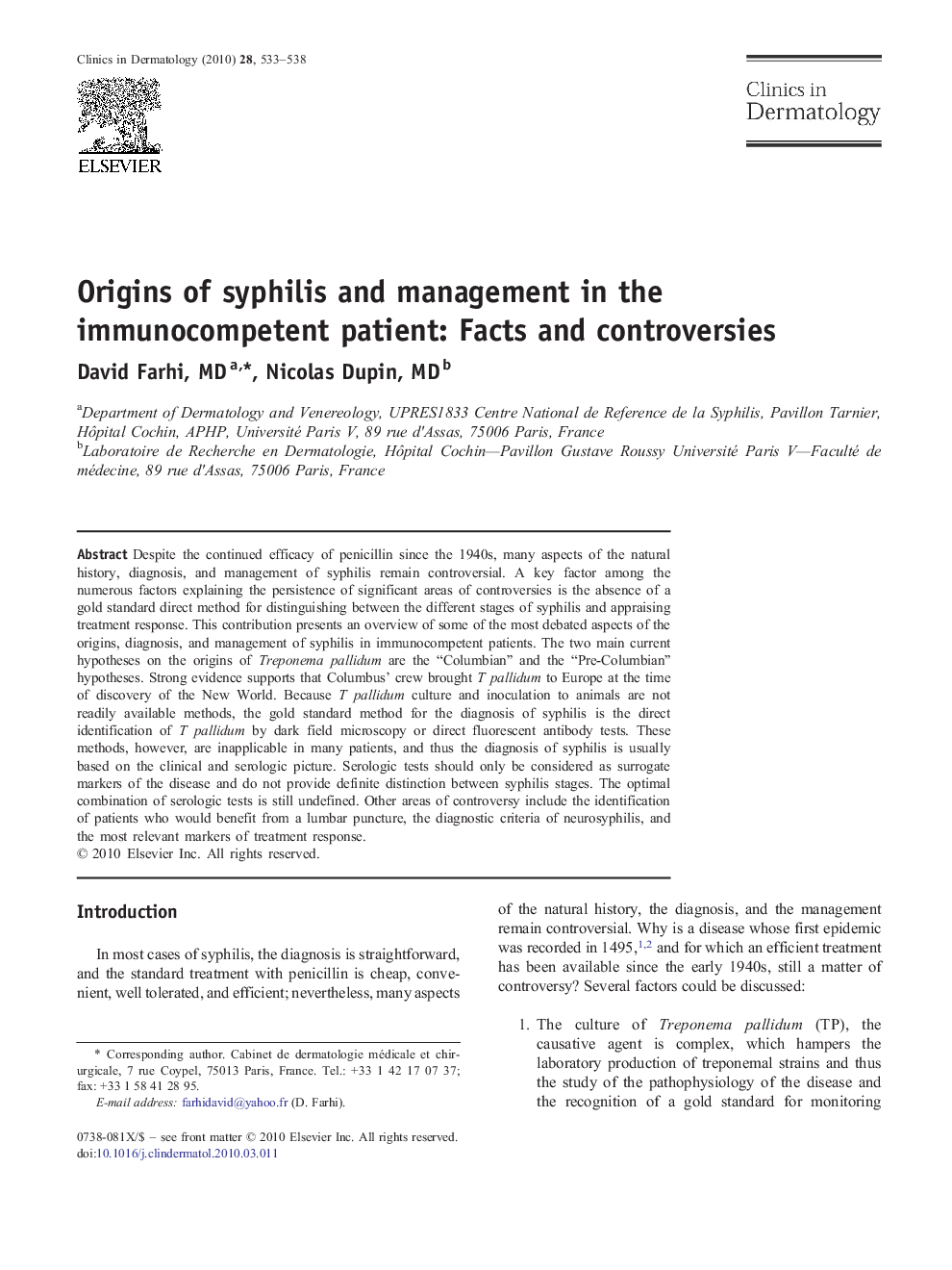| کد مقاله | کد نشریه | سال انتشار | مقاله انگلیسی | نسخه تمام متن |
|---|---|---|---|---|
| 3194799 | 1201408 | 2010 | 6 صفحه PDF | دانلود رایگان |

Despite the continued efficacy of penicillin since the 1940s, many aspects of the natural history, diagnosis, and management of syphilis remain controversial. A key factor among the numerous factors explaining the persistence of significant areas of controversies is the absence of a gold standard direct method for distinguishing between the different stages of syphilis and appraising treatment response. This contribution presents an overview of some of the most debated aspects of the origins, diagnosis, and management of syphilis in immunocompetent patients. The two main current hypotheses on the origins of Treponema pallidum are the “Columbian” and the “Pre-Columbian” hypotheses. Strong evidence supports that Columbus' crew brought T pallidum to Europe at the time of discovery of the New World. Because T pallidum culture and inoculation to animals are not readily available methods, the gold standard method for the diagnosis of syphilis is the direct identification of T pallidum by dark field microscopy or direct fluorescent antibody tests. These methods, however, are inapplicable in many patients, and thus the diagnosis of syphilis is usually based on the clinical and serologic picture. Serologic tests should only be considered as surrogate markers of the disease and do not provide definite distinction between syphilis stages. The optimal combination of serologic tests is still undefined. Other areas of controversy include the identification of patients who would benefit from a lumbar puncture, the diagnostic criteria of neurosyphilis, and the most relevant markers of treatment response.
Journal: Clinics in Dermatology - Volume 28, Issue 5, September–October 2010, Pages 533–538